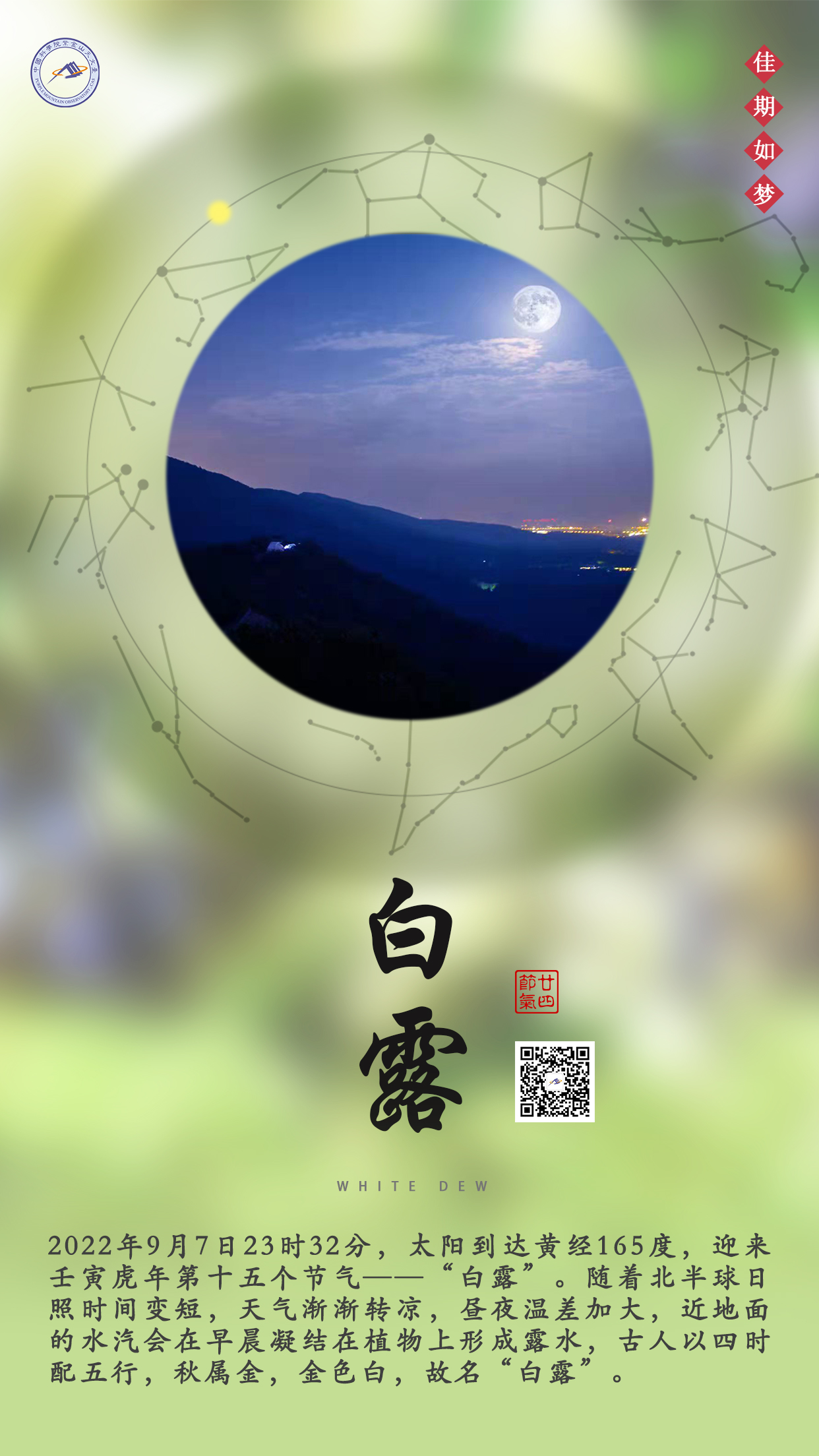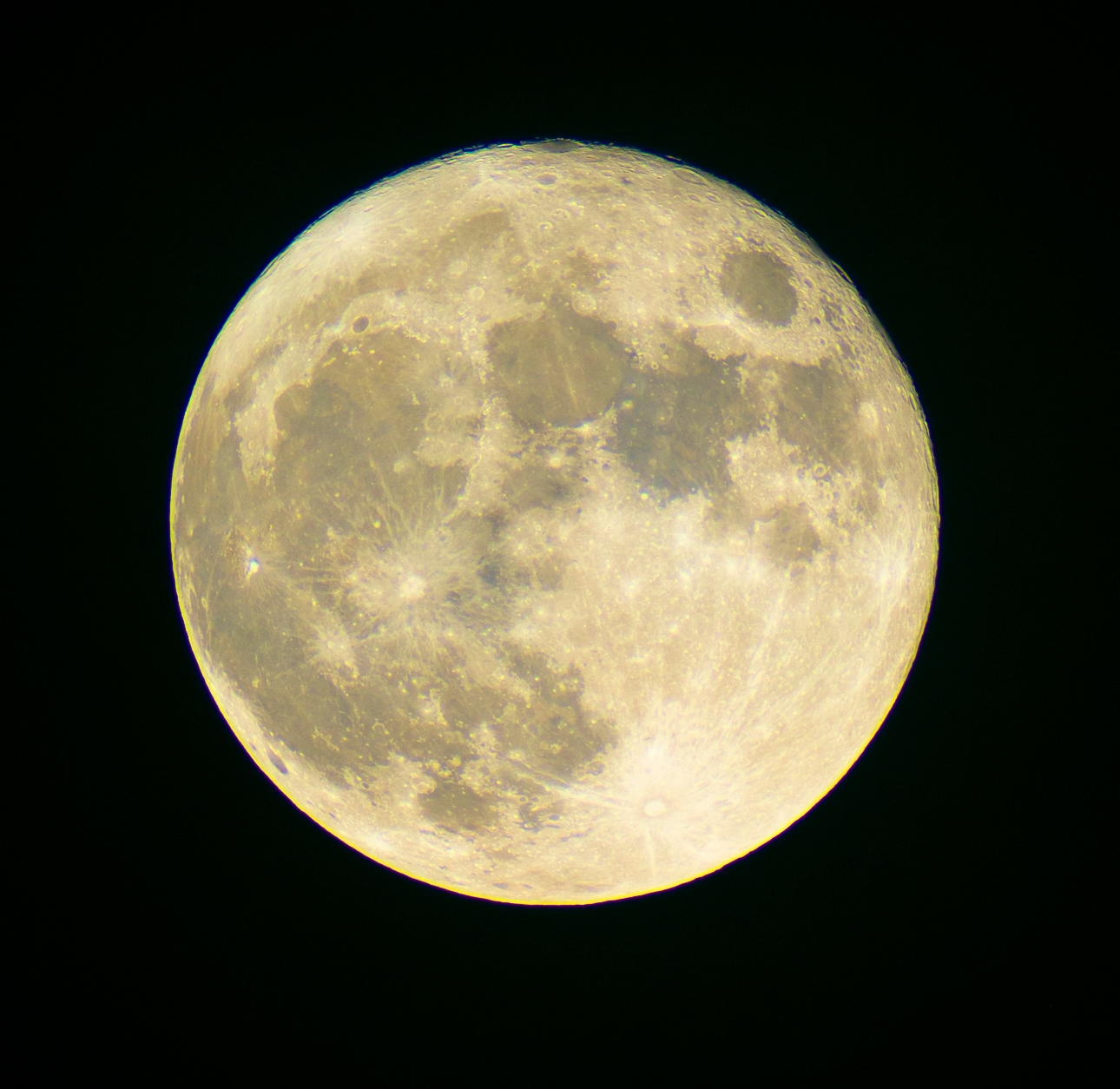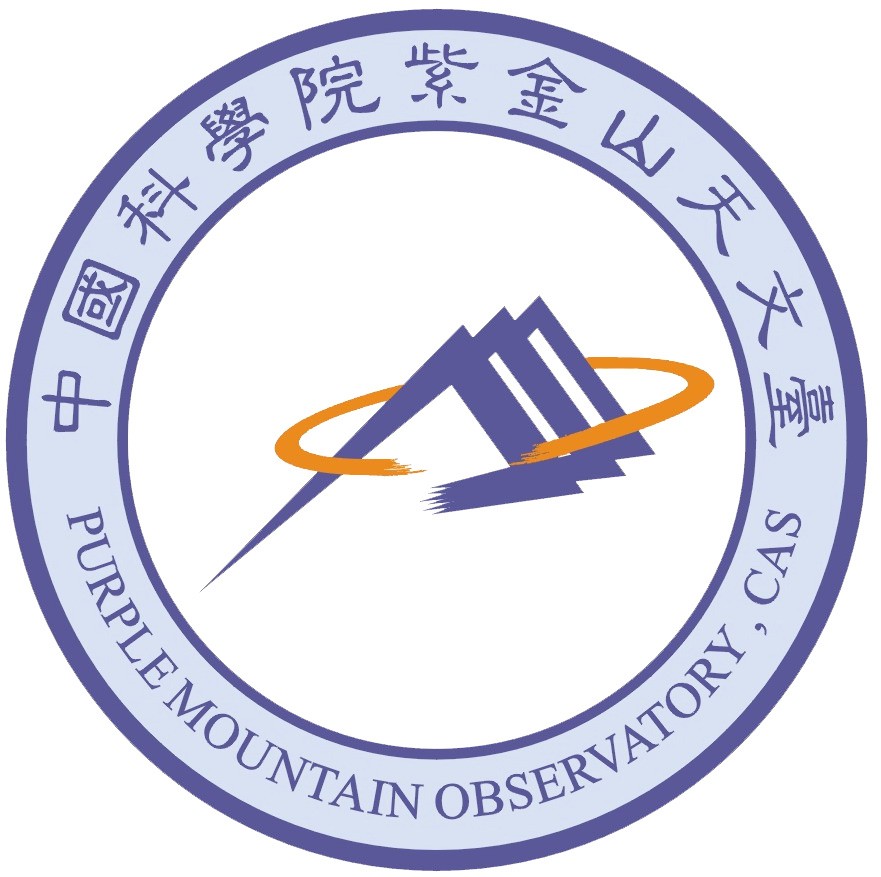“蒹葭苍苍,白露为霜。”《中国天文年历》显示,9月7日23时32分迎来2022年“白露”节气。

天象预报
白露——秋分
太阳
从狮子座运行至室女座。目前太阳活动性不强,太阳正面有数群小黑子,可通过带减光的望远镜观测。
月亮
9月10日(农历八月十五,中秋节)17时59分望,太阳落山不久,珠圆玉润的月亮便从东方升起,在夜空中陪伴我们共度良宵。
水星
昏星,9月10日留,在室女座由顺行转为逆行。日落后出现在西偏南方向的低空,观测条件逐渐变差。
金星
在狮子座顺行。与太阳的角距离持续减小,黎明前出现在东方的低空,肉眼可以观测。
火星
在金牛座顺行。亮度逐渐增加,夜晚23时左右升起,黎明前都可以观测。
木星
在双鱼座逆行。9月11日木星合月,夜晚可见木星与月亮相伴从东方升起。
土星
在摩羯座逆行。入夜即从东南方升起,整夜都可以观测。
小知识
生活在海边的人们对海水在一天中两次涨落的潮汐现象一定不会陌生。潮汐主要由月球、太阳等天体的引力产生的引潮力造成。引潮力等于被吸引天体某部分受到的引力与该天体中心处同样质量部分受到的引力之差(向量差),其数值与引力来源天体的质量成正比,与两天体之间的距离的立方成反比。月球对地球的引潮力最大,其次是太阳,是月球的46%,其他七大行星加起来的引潮力最大使海水涨落也不超过0.4毫米。
在农历的一个月中,当朔和望时,太阳和月球的引潮力叠加在一个方向上,潮水涨落最大,称为大潮;上、下弦时,太阳、月球引潮力方向相互垂直,有抵消作用,潮水涨落最小,称为小潮。通常海水一天涨落两次,发生在月球上、下中天的时刻。不过实际上,在某一具体地点,由于太阳、月球的高度和方位错落变化,海底及海岸地形不同及海水流动时的摩擦作用,潮汐涨落的大小和时间规律是相当复杂的,不同地点,表现各不相同。

The White Dew
The fifteenth solar term of the traditional Chinese calendar, White Dew (BaiLu in Chinese), falls on September 7th at 23:32 (Beijing Time) in 2022, when the Sun reaches a longitude of 165º. After White Dew, as daytime in the north hemisphere becomes shorter, the weather gradually turns cool and the temperature difference between day and night increases. As a result, water vapour near the ground condense into dews in the morning. The ancient Chinese associated the four seasons with the five elements. Autumn was matched with metal, which is white, therefore this solar term is called the "White Dew".

Astronomical Forecast
White Dew——Autumn Equinox
⊙
The Sun
The sun travels from Leo to Virgo. Currently, solar activity is low, with a few groups of small sunspots on its surface. They can be observed through a telescope with a safe solar filter.
☽
The Moon
On Sept. 10th at 17:59, the moon becomes full moon. In Chinese lunar calendar, this day is Aug. 15th, the Mid-Autumn Festival. The moon will rise in the eastern sky shortly after sunset.
☿
Mercury
Mercury appears as an "evening star". It is stationary on Sept. 10th. It travels in Virgo from prograde motion to retrograde motion. After sunset, it appears in the low south-western sky and becomes harder to observe.
♀
Venus
Venus travels in prograde motion in Leo. Its angular distance to the sun continues to decrease. It appears in the low north-eastern sky before sunrise and can be spotted with the naked eye.
♂
Mars
Mars travels in Taurus in prograde motion. Its magnitude increases gradually. It rises around 23:00 and can be seen till dawn.
♃
Jupiter
Jupiter travels in Pisces in retrograde motion. It is in conjunction with the moon on Sept. 11th. We can see Jupiter and the moon rise together in the eastern sky.
♄
Saturn
Saturn travels in retrograde motion in Capricornus. It rises from the south-eastern sky in the evening and can be observed all night.
轮值主编:袁强
制作、编辑:王科超
英文版设计:朱曼清
(金陵中学)ZHU manqing
来源: 紫金山天文台


 科普中国公众号
科普中国公众号
 科普中国微博
科普中国微博

 帮助
帮助
 紫金山天文台
紫金山天文台 